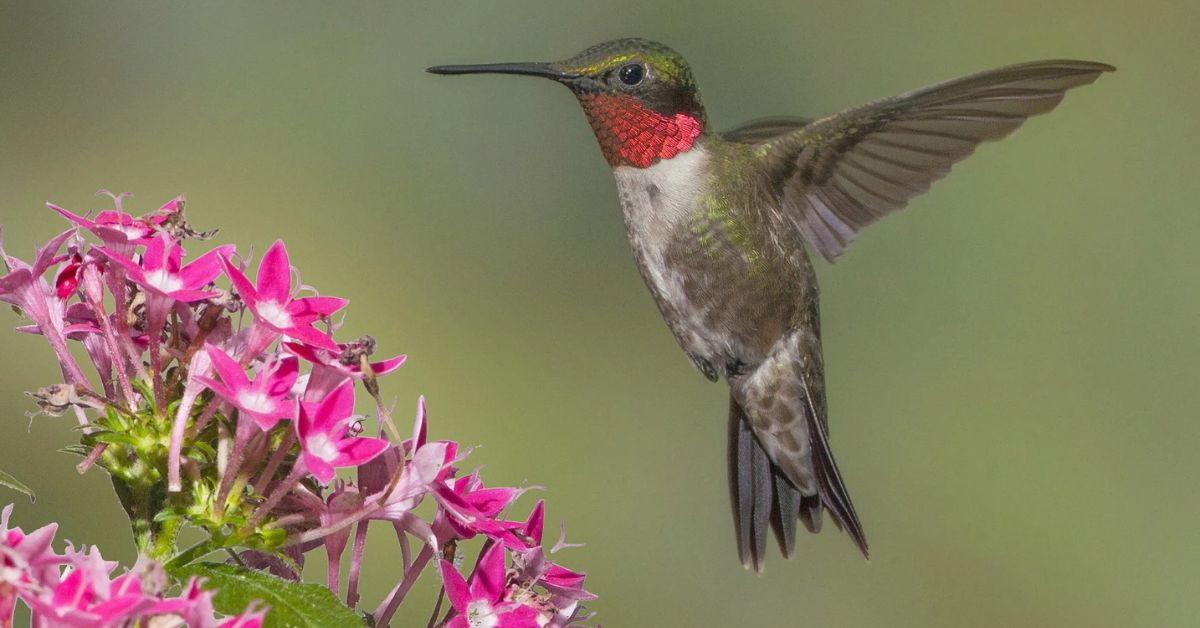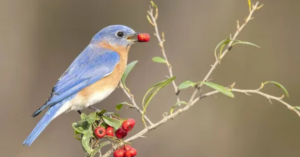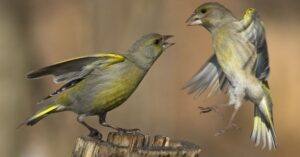As the days grow shorter and the air turns crisp, a remarkable spectacle unfolds in the skies above us, hummingbird migration. These tiny avian wonders, often no larger than a thumb, embark on an astonishing journey that spans thousands of miles.
But when do hummingbirds migrate south? Understanding their migration patterns not only enchants birdwatchers but also highlights the incredible resilience and adaptability of these delicate creatures.
Hummingbirds are more than just beautiful visitors to our gardens; they are skilled navigators with an innate sense of timing. Their seasonal trek is driven by instinct, fueled by changing temperatures and dwindling food sources.
Why Do Hummingbirds Migrate?
Hummingbirds migrate in search of food and optimal breeding conditions. As tiny creatures with incredibly high metabolisms, they rely on nectar-rich flowers which are abundant in warmer climates.
When the days grow shorter and temperatures drop, these avian marvels instinctively know it’s time for hummingbirds migration to begin, a quest that can span hundreds of miles across treacherous terrains. This natural phenomenon isn’t just an act of survival; it also plays a crucial role in pollination, helping to maintain the ecosystems they traverse.
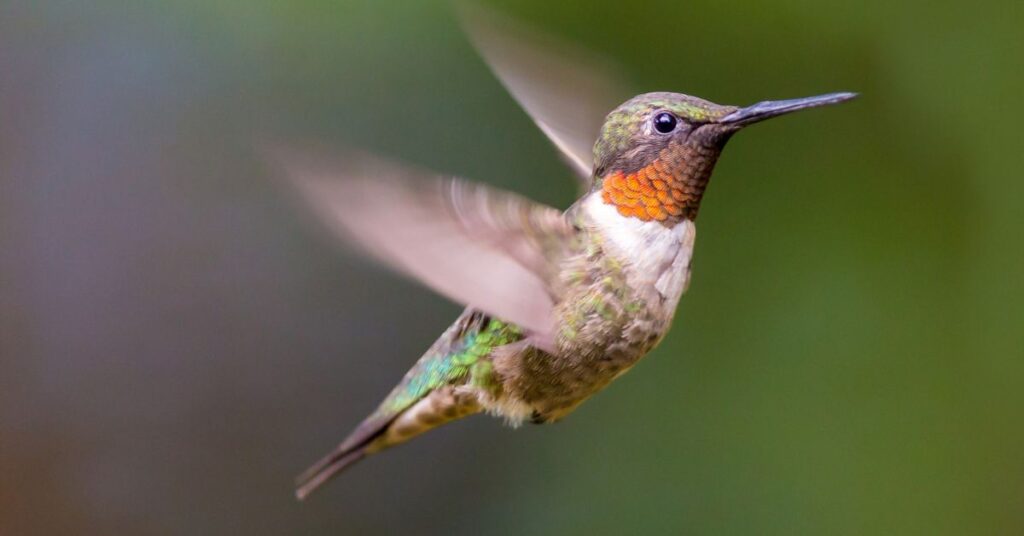
So when do hummingbirds fly south? Typically, many species embark on their long journey around late summer to early fall, seeking refuge in more hospitable regions like Mexico or Central America before winter fully sets in.
Some hummingbird species cover distances exceeding 3,000 miles! The timing may vary slightly based on environmental cues and geographical location but knowing when these enchanting birds make their exodus can be vital for gardeners looking to provide sustenance during this transitional period.
Hummingbirds That Migrate Into The US And Canada:
The migration of hummingbirds showcases some remarkable journeys, particularly for species like the Allen’s Hummingbird, which breeds along the Pacific Coast. As summer wanes, these tiny birds embark on a daring migration to their wintering grounds in Mexico, often making a perilous trek over mountainous terrain and long stretches of ocean.
Another notable traveler is the Black Hummingbird, known for its distinctive black throat adorned with iridescent green. Breeding across the southwestern United States, this species undertakes a migratory journey southward into Mexico each fall.
The Broad-tailed Hummingbird, easily recognized by its metallic green back and rust-colored sides, makes its home in montane habitats. With an impressive migration of over 1,000 miles to central Mexico during colder months, it brings cheer to backyard feeders along its route.
The Buff-bellied Hummingbird also embarks on migrations between southern Texas and coastal areas of Mexico; it captivates birdwatchers with its warm buff underbelly and resounding vocalizations that echo through its habitat.
The diminutive Calliope Hummingbird exhibits fascinating resilience by migrating all the way from western Canada down to Arizona or New Mexico to escape harsh winters.
The vibrant Costa’s Hummingbird (with its striking purple crown) prefers warmer climes but finds itself partaking in shorter migratory routes within California when weather conditions require relocation due to food availability concerns.
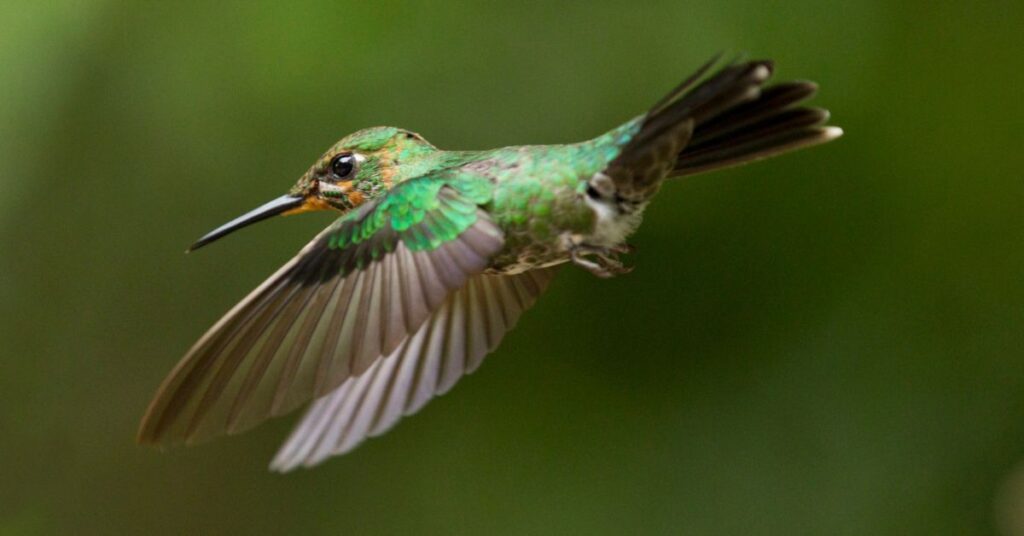
Equally captivating is the stunningly depicted beauty of both male and female Lucifer hummingbirds whose shimmering colors catch every eye as they migrate within parts of Arizona towards more temperate regions come wintertime.
The majestic Magnificent hummingbird takes center stage with rich dark green feathers that transition into spectacular royal blue as it traverses between high-altitude forests across western North America during migration seasons.
Ruby-Throated Hummingbird Migration
As the hummingbird season unfolds, nature enthusiasts eagerly anticipate the arrival of Ruby-throated Hummingbirds, which migrate from North America to spend winters in Central and South America.
Beyond Ruby-throated Hummingbirds, South American hummingbirds add tremendous diversity to this captivating family. With over 300 species ranging from the dazzling Rufous-tailed Hummingbird to the iridescent Green-crowned Brilliant, each one brings unique colors and behaviors that enrich habitats across tropical landscapes.
As November rolls in, the ruby-throated hummingbird begins its remarkable migration journey. These tiny aviators engage in specific hummingbird patterns that defy conventional expectations of avian travel. With instinct guiding them, they embark on a non-stop flight across the Gulf of Mexico, covering as much as 500 miles in a single day. This incredible stamina ensures their survival as they seek warmer climates and abundant food sources.
In December and January, ruby-throated hummingbirds are often found basking in the sunny landscapes of Central America where blooming flowers provide ample nectar. During these months, while many other bird species retreat southward from colder regions, these resilient birds adapt their travel routes according to seasonal changes and availability of resources.
By late February, they begin their return journey northward, retracing steps through carefully established pathways. Observers can marvel at this intricate cycle of life as these migratory wonders reappear to grace our gardens once again with their dazzling iridescence come springtime.
How Do Ruby-Throated Hummingbirds Migrate?
Ruby-throated Hummingbirds, the most common of North American hummingbirds, exhibit a fascinating and arduous migration that showcases their incredible endurance and navigational skills. Every year, these tiny avian marvels embark on an extraordinary journey from their breeding grounds in eastern North America to spend the winter months in Central America.
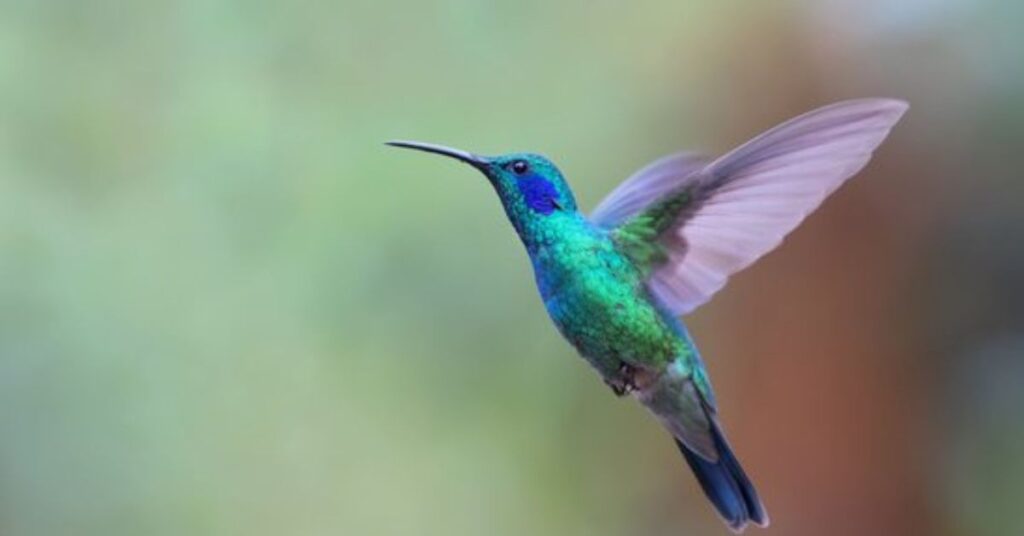
For Minnesota hummingbirds, this migration is particularly compelling as they often gather in groups before making the breathtaking flight across the Gulf of Mexico—a distance that poses significant challenges for such small creatures.
During migration, Ruby-throated Hummingbirds will double their weight by consuming vast quantities of nectar from flowers and sugar-water feeders—making it critical for Minnesotans to keep feeding stations available as these birds fuel up before departure.
Dietary Needs Of The Migrating Ruby-Throated Hummingbird
As the ruby-throated hummingbird embarks on its epic migration from North America to Central America, its dietary needs become critical for fueling this demanding journey. These tiny birds rely heavily on the nectar of blooming flowers, but they also require a diverse diet rich in proteins and essential nutrients.
Hummingbirds are not just passive nectar drinkers; they actively seek out specific flowers that offer not only abundant sugar-rich nectar but also complementary nutritional benefits such as amino acids found in tree sap and insects.
The timing of flowering plants along their migratory route plays a pivotal role in sustaining these feathered athletes. As they travel thousands of miles, ruby-throated hummingbirds are adept at identifying the most productive feeding sites through their excellent memory and keen observational skills.
They’re able to remember past locations where food sources were plentiful—demonstrating an intricate relationship with their environment that underscores the importance of seasonal flora cycles.
Rufous Hummingbird Migration
The Rufous Hummingbird, a remarkable avian traveler, embarks on one of the most extraordinary migrations in the animal kingdom each year. Starting from its breeding grounds in the Pacific Northwest and western Canada, these tiny birds embark on a grueling journey of up to 3,500 miles to reach their wintering habitats in Mexico.
Backyard Birders & Hummingbird Migration
As the cooler months approach, backyard birders become increasingly attuned to the mesmerizing phenomenon of hummingbird migration. This tiny avian marvel undertakes one of nature’s most daring journeys, traveling up to 500 miles non-stop across the Gulf of Mexico to reach their wintering grounds.
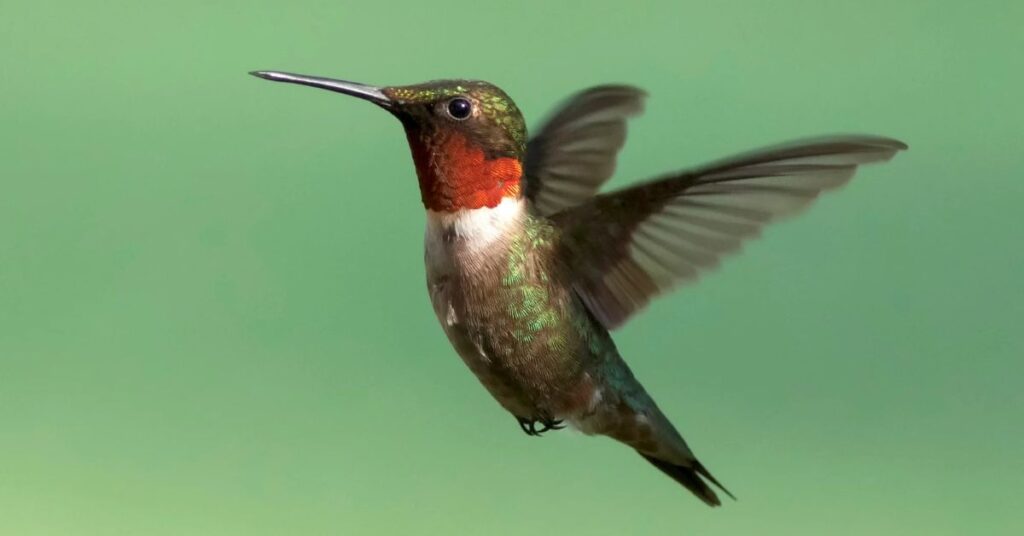
Interested birders can prepare for their arrival by strategically planting native flowering plants that provide vital nectar sources along migratory routes. With resources depleting due to habitat loss from urbanization, creating a welcoming environment not only boosts local ecosystems but also turns individual yards into critical waystations for tired travelers.
If you liked our post, you might also love our other post: Hummingbirds’ Spiritual Meaning: A Simple Guide to Their Special Symbolism.
Conclusion
Hummingbird migration is a fascinating phenomenon that showcases the remarkable endurance and navigation skills of these tiny birds. Covering thousands of miles between their breeding and wintering grounds, they rely on various environmental cues to guide their journey.
Understanding the factors that influence their migration patterns can help us protect their habitats and ensure their survival.
FAQ’s
When Do Hummingbirds Migrate?
Hummingbirds typically migrate seasonally, with the timing largely influenced by their species and geographic location. In North America, most hummingbirds, particularly the Ruby-throated Hummingbird, begin their migration south in late summer to early fall, usually around mid-August to September.
Where Do Hummingbirds Migrate To?
The Ruby-throated Hummingbird migrates from its breeding areas in eastern North America to wintering locations in Central Mexico and parts of southern Texas.
Other species, such as the Anna’s Hummingbird, have more localized migrations or may even remain year-round in milder climates along the Pacific Coast.
Overall, while specific migration patterns can vary by species, hummingbirds generally seek warmer climates with abundant food sources during the colder months to sustain them through their long journeys.
Do All Hummingbirds Migrate?
Not all hummingbirds migrate, but many species do. Migration patterns vary significantly among the different types of hummingbirds, primarily influenced by their geographic location and environmental conditions.
How Do Hummingbirds Migrate?
Hummingbirds migrate in response to seasonal changes and the availability of food sources. Most species, such as the Ruby-throated Hummingbird, undertake a remarkable journey from their breeding grounds in North America to warmer regions in Central America for the winter.
When Do Hummingbirds Migrate?
Hummingbirds typically migrate in response to changes in temperature and food availability, primarily driven by the blooming of flowers and the presence of nectar.
How Long Do Hummingbirds Live?
Hummingbirds generally have a lifespan ranging from 3 to 5 years in the wild, although some individuals can live significantly longer under optimal conditions.
Factors such as predation, food availability, and environmental hazards can impact their survival rates.The oldest known hummingbird lived to be over 9 years old, highlighting that while many may not reach this age, it is possible for them to do so.
How Fast Is A Hummingbird?
The Ruby-throated Hummingbird, one of the most common species in North America, can fly at speeds of up to 30 miles per hour (48 kilometers per hour) during straight flight. When diving, some species have been recorded reaching speeds of over 60 miles per hour (97 kilometers per hour).
- How To Keep Bees Away From Hummingbird Feeders - March 20, 2025
- How To Attract Owls To Your Yard - March 11, 2025
- Breeding Season For Wild Birds - March 9, 2025
